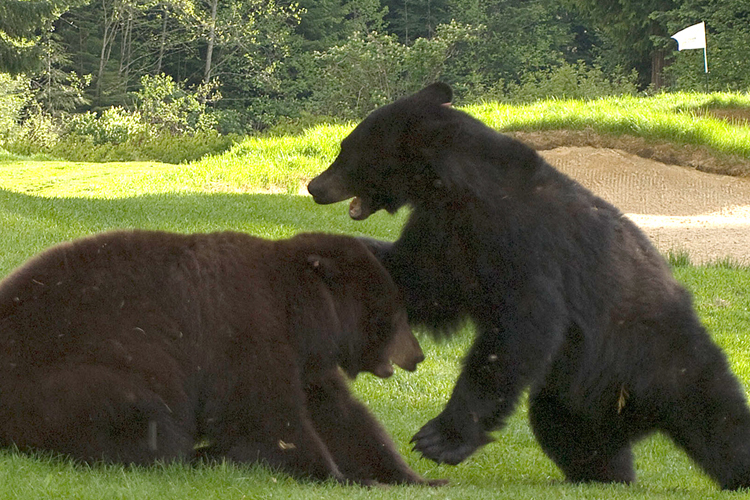
Driving the green has always been beneficial for golfers but Whistler golf courses have been putting a lot of effort into hitting “green” environmental targets as well. This year the Whistler Golf Club achieved designation as a certified Audubon Cooperative Sanctuary course, one of only 95 in Canada.
“We were already meeting some of the requirements,” explains assistant course superintendent Stuart Carmichael, “but as more and more groups started asking about our environmental values it just seemed like the right time.”
Habitat Management
The oldest course in the valley, the Whistler Golf Club is also a favourite hangout of resident black bears so wildlife and habitat management and education played a large role in achieving the certification. “A lot of it has to do with confining all our food sources and garbage bins,” Stuart explains, “but we also ensure each guest is informed when we meet them at the first tee. Our hosts keep everyone up to speed on where the bears are and what to do with their food and recyclables.”
LEFT: Locals enjoying the Whistler Golf Club. RIGHT: More locals enjoying the Club.
Other aspects of habitat management include expanding staff knowledge of the plants and wildlife species found on the course, attention to wildlife habitat in non-play areas of the course and encouragment of biological diversity by protecting native habitats and species that depend on them for survival.
Water is important to any golf course (but important to avoid for your golf score). Whistler Golf Club: Hole 8
Environmental Quality Control
Audubon certification also requires a high degree of environmental quality in chemical use, safety and reduction, water conservation and water quality management. “Water is important to any course, and we have streams on two sides of us,” Stuart says. The club pays close attention to water use and sprinkler maintenance to ensure maximum efficiency and minimum waste. Water quality in existing ponds and streams are monitored in order to detect and correct any issues that arise.
“Keeping chemicals out of the water is important and we have been weaning out chemical use for a while now,” Stuart says. “Rather than wall-to-wall spraying we do a lot of spot treatments and focus mainly on the greens. It means letting some disease and weeds go in certain areas but by focusing on the greens, that is only 3.4 acres of our entire 100 acre property.”
Whistler Golf Club’s Crabapple Creek before (left) and after (right) the creation of a buffer zone to help preserve ecological integrity.
Green Golf: Audubon Certified
The Whistler Golf Club is only the 901st Audubon certified course in the world, and every two years they will need to re-certify to keep that title. “For me, the biggest reward so far has come from peers in the industry,” Stuart says. “Because they know what it takes to commit to those different pillars and the work required for this certification. And now we can start educating the average golfer on how much work it takes, but also why it’s so important to do that work.”
The good news for Whistler golfers is that the Fairmont Chateau Whistler Golf Club is also certified and Nicklaus North Golf Course is also working with Audubon International. So when players hit the greens in Whistler, they’re landing on some of the greenest greens in the industry.
More Whistler Greens. LEFT: Fairmont Chateau Whistler Golf Club. RIGHT: Nicklaus North Golf Course.
See you on the links for some green golf! You can learn more about the Audubon Cooperative Sanctuary Program for Golf and the best place to book your Whistler golf holiday is always Whistler.com.

